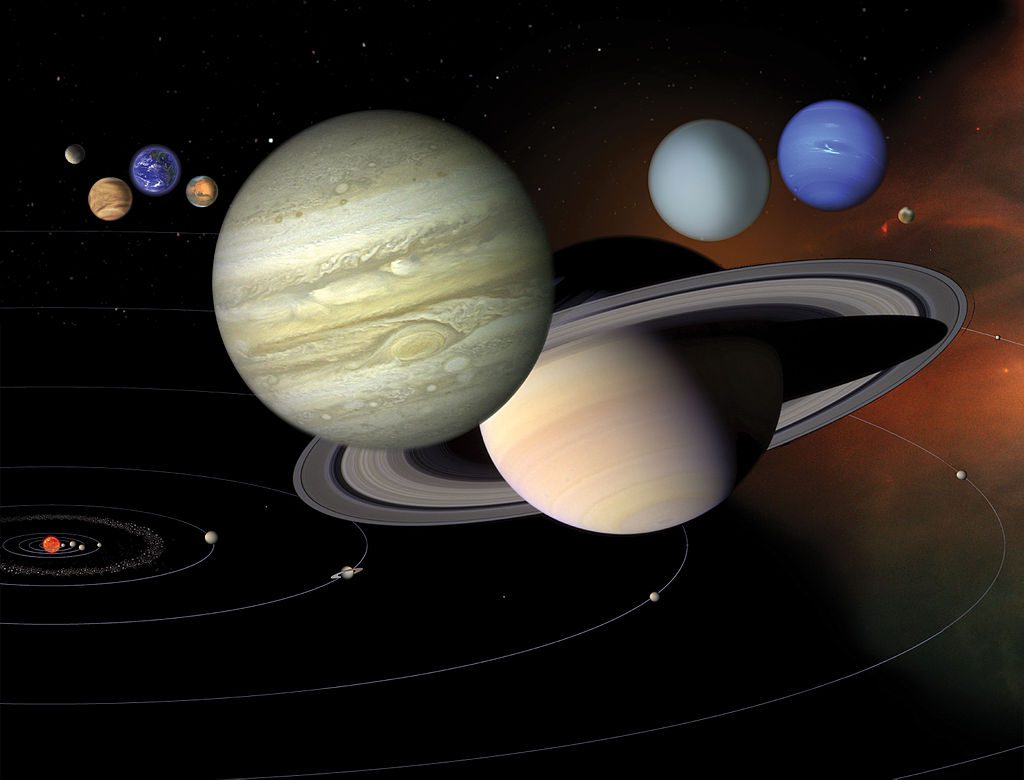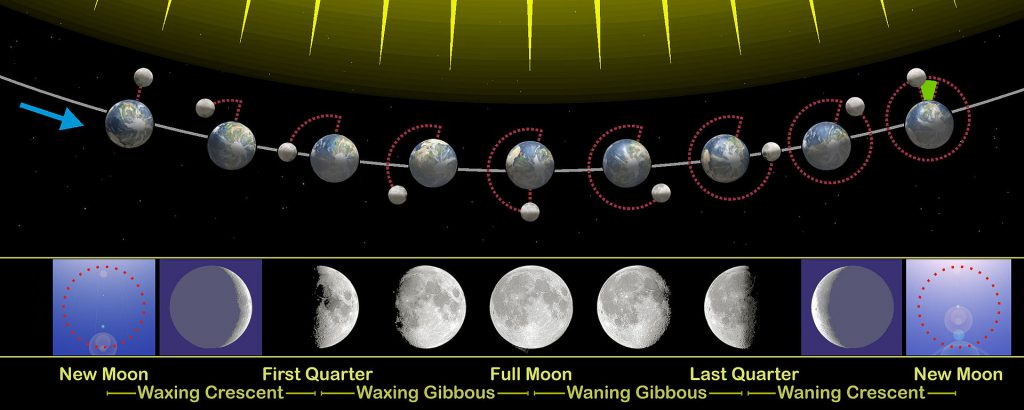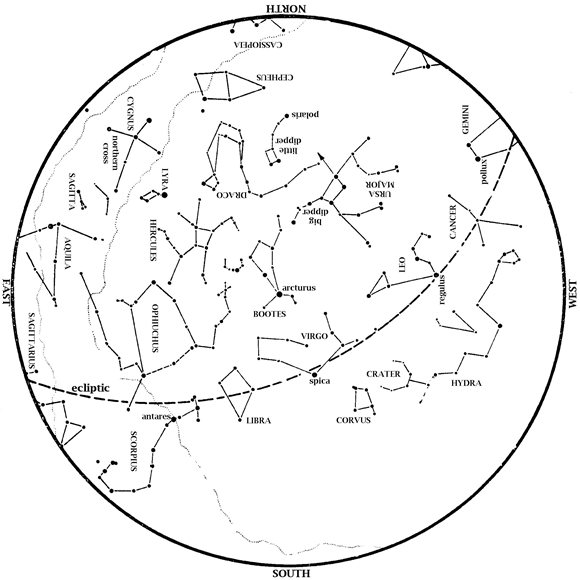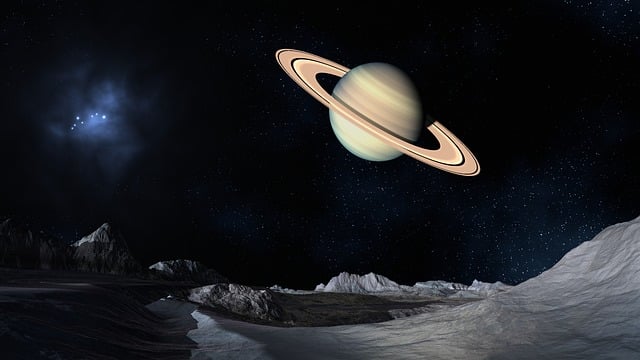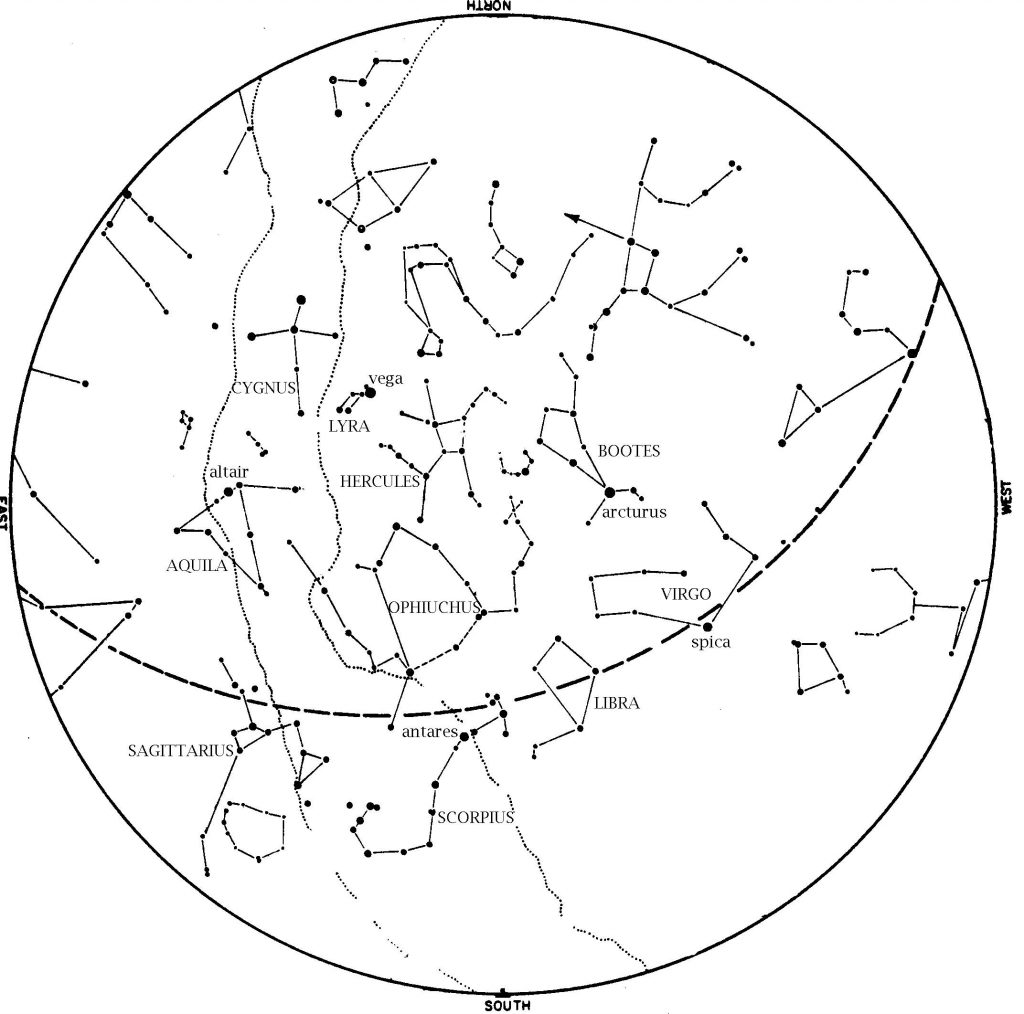
This star map shows the Houston sky at 10 pm CDT on July 1, 9 pm CDT on July 15, and dusk on July 31. To use the map, put the direction you are facing at the bottom
The Summer Triangle is high in the east. This consists of the brightest stars in Cygnus, Lyra, and Aquila. Scorpius, the Scorpion, is in the south, with the ‘teapot’ of Sagittarius to his left. Leo, the Lion, sets in the west. From the Big Dipper’s handle, ‘arc to Arcturus’ and ‘speed on to Spica’ in the southwest. Jupiter is near Spica. Saturn remains in the south at dusk.
What Our Celestial Neighbors Are Up To
Saturn is also well placed for evening viewing, southeast to the left of reddish Antares at dusk. Saturn won’t be nearly as bright as Jupiter, but easily outshines the stars right near it.
Venus remains a brilliant morning star this month. Look in the east at dawn. Venus outshines everything in the sky except the Sun and the Moon.
Mars is lost in the Sun’s glare and out of sight all summer.
The Big Dipper is above the North Star, with its handle pointing up. From that handle, you can ‘arc to Arcturus’ and then ‘speed on to Spica’; those stars are in the west at dusk. Leo, the Lion, is also in the west at dusk. Jupiter is near Spica in Virgo.
Antares, brightest star of Scorpius, the Scorpion, is in the south, with the ‘teapot’ of Sagittarius to its left. Saturn is between Scorpius and Sagittarius. The Summer Triangle has fully risen in the east. The stars of summer are here.
Moon Phases in July 2017:
Full July 8, 11:07 p.m. Last Quarter July 16, 2:26 p.m.
New July 23, 4:46 a.m. 1st Quarter July 30, 10:23 a.m.
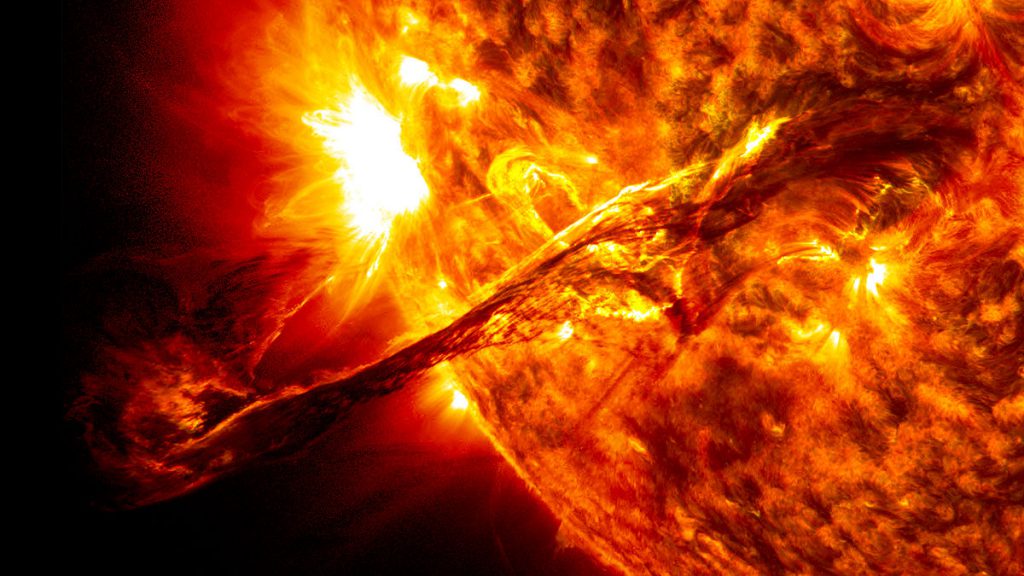
On Aug. 31, 2012, a giant prominence on the sun erupted, sending out particles and a shock wave that traveled near Earth. This event may have been one of the causes of a third radiation belt that appeared around Earth a few days later, a phenomenon that was observed for the very first time by the newly-launched Van Allen Probes. This image of the prominence before it erupted was captured by NASA’s Solar Dynamics Observatory (SDO).
The summer solstice occurred at 11:24 pm CDT on Tuesday, June 20. During July, then, the days begin to shorten a little as the Sun takes a slightly lower path across the sky each day. The difference is quite noticeable by July 31. But why is it even hotter this month than in June? That’s because the air, once heated, takes time to cool off. We can’t get any relief from our Texas heat until some cold air from up north moves over us. At the solstice, however, the Sun shines on the entire Arctic all day. The air masses there are therefore not as cold as in winter, and they don’t travel all the way down to us. During July, the Sun still shines over a little bit less of the Arctic each day, but still most of it. Thus, the air masses up there are still not very cold and still too weak to come anywhere near us. Indeed, the heat in the air masses at our latitude continues to build without interruption, making us even hotter. That’s why we go right on sweltering even as the days shorten this month.
This state of affairs continues through August and well past Labor Day, until at last there is enough darkness in the Arctic to make the air there cold enough that a cold air mass can come from there down to the Gulf Coast. In the meantime, we can settle in for several more months of this heat.
On most clear Saturday nights at the George Observatory, you can hear me do live star tours on the observation deck with a green laser pointer. If you’re there, listen for my announcement.
Clear Skies!


